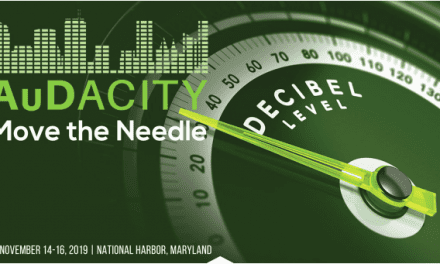Practice Management | August 2017 Hearing Review
Hospice is a philosophy of care that focuses on the reduction or elimination of a seriously ill patient’s pain and symptoms. Hospice care also includes attending to the patient’s emotional and spiritual needs.
All of us in hearing care know intimately how devastating it can be when any person can’t communicate easily. At the end of life, being able to stay connected to family and friends is critical. Often families are reluctant to pursue hearing aids because the patient may be immobile or they fear a large expense. However, research1 shows that while most audiologists are interested in being part of the end-of-life care team, a much smaller percentage are actually doing so.
Over the past 4 years, we have developed a Hospice Hearing Program in our community where we travel to the patients, screen their hearing, and fit them with appropriate donated hearing devices—all at no charge. I believe there should be a Hospice Hearing Program in every community, and I’m hoping to help establish more of these programs. Here are 7 steps to get started.
Step 1: Contact Your Local Hospice Organization
The first step in getting started is to reach out to your local hospice organization. We have a few in our area, based on geographical coverage as well as facility affiliation. It’s best to try to reach the Program Director or Medical Director. One way to get their attention is to say that you want to donate to them, and then you can explain that what you want to donate is your time, services, and hearing aids. I also have a recommendation letter from our local Hospice Medical Director that provides more detailed insights into what our program provides, and I can share this with you via email (contact information below).
Step 2: Create Awareness of Your Program at Local Medical Facilities
It’s important to not only get hospice nurses and staff but other community medical staff onboard with referring patients to your program. Ask the hospice organization if they will send an email to their staff with details about your program. See if local hospitals and internal medicine doctors will post a flyer about your offering.
Step 3: Supply Your Program with Hearing Aid Donations
We’ve found no shortage of hearing devices for our hospice program through donations. An early route we took to create instant supply was to call our top manufacturing partners and ask for donations of used devices that they could not sell. Over time, we’ve also offered to our existing patients the option to donate their old technology upon upgrade, which they can use as a write-off on their taxes.
Step 4: Learn How to Make Instant Custom Earmolds
One critical piece of the hospice hearing care puzzle is being able to make instant custom earmolds. This is a technique we developed long before our hospice program began, and it has served our practice in many ways. Important benefits include not having to pay for earmolds before a patient decides to purchase, as well as the ability to instantly fit losses that can’t be fit with domes. We are also able to offer loaner devices for patients with custom products that need repair.
With a hospice program, it’s critical to get patients hearing the best we possibly can right away, so we often make an instant custom mold on the spot. I have training materials available to show you exactly how to do this (see email below).
Step 5: Get Your Staff Onboard
If you’re a sole owner-operator, this section does not apply, but if you have audiologists or hearing instrument specialists on your staff, it’s important to get them excited about the idea. It should go without saying that this is a very personally and professionally rewarding endeavor in which to become involved. However, it may help to consider ways to keep staff motivated, such as sharing data on referrals from hospice during quarterly staff meetings.
Step 6: Streamline Your Office Processes So You Can Maximize Time for Your Hospice Hearing Program
When hearing care professionals are stuck in the office until 6 PM every night finishing up chart notes and reports, it’s hard to find the energy to give back. It’s important to make the most of your practice management software (or start using one if you’re still on pen and paper) as well as to take advantage of cloud-based integrations that increase efficiency.
Step 7: Believe in the Silver Bullet of Private Practice Success
I like to say I’ve found the silver bullet to successful private practice audiology growth—it’s hard work. There is no newspaper ad that will change the trajectory of your business in the next 5 years. However, if you do good things both within and outside the walls of your office, you and your staff will be rewarded—personally and financially. A Hospice Hearing Program is an exceptionally effective way to make a real positive impact in your community.
Correspondence to Bill Diles at: [email protected]
Citation for this article: Diles B. Seven steps to establishing a hospice hearing program in your community. Hearing Review. 2017;24(8):40.
References
-
Rickey L, English K. Audiology care at the end of life. Audiology Today. 2016;28(4)[Jul/Aug]:14-20.






Thank you for that Mr. Diles. Hearing healthcare is a lifetime necessity. Ensuring end of life connection and communication is possibly the most compassionate thing anyone can do for others. I’m not sure what the first commenter meant by their post (other than self promotion/aggrandizement?) but I hope that all of us, titled, credentialed and licensed or any combination of the prior, has their patient or customers best interests as their primary motivation. Thanks again, Bill, for this article.
There are some merits to such programs. I can see why audiologists will not participate in them because of the time element. Also, it could be a distraction from the primary task of improving the quality of life.
I would add: Start the process much earlier in the aging patient’s life so as to streamline the process before hospice. The families of such patients need counseling, and we must provide that proactively. Hence foresight is necessary. I have been doing that for almost 20 years.
Definitely, this is a job for a HAD and not an audiologist. The element of human care and TLC is better accomplished by HAD’s. Hospice has the core as human care.
Excellent program and article. Thank you Bill!